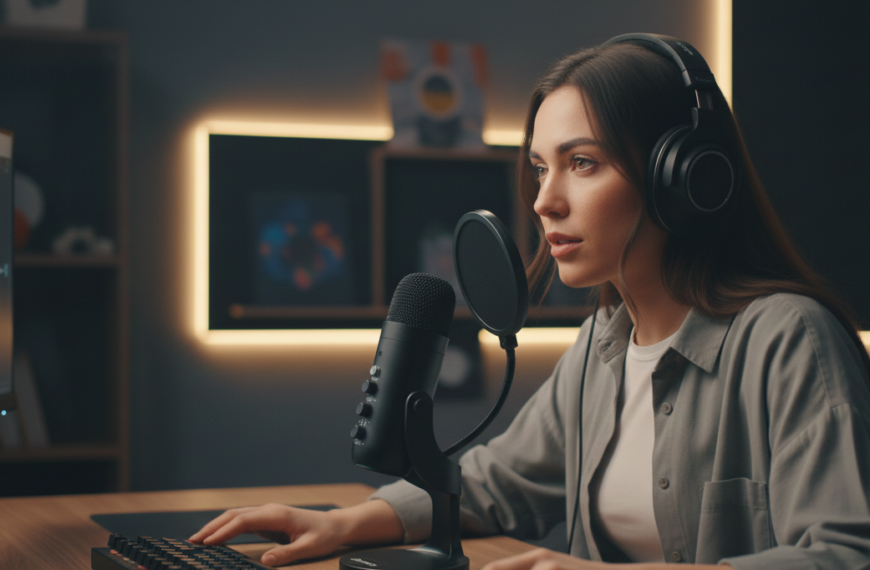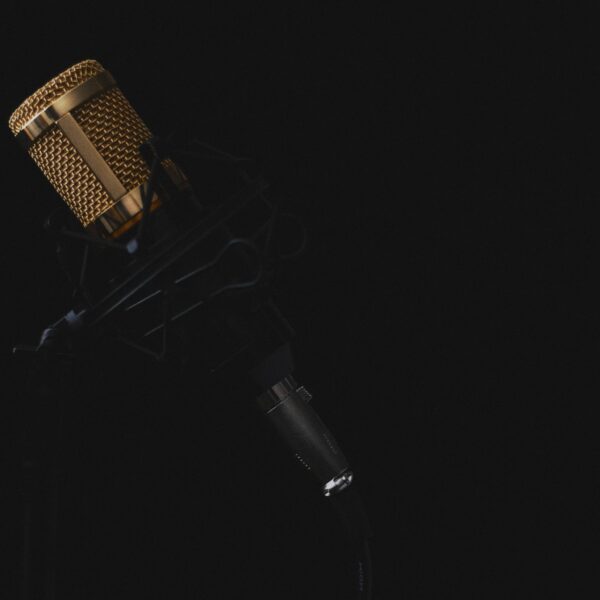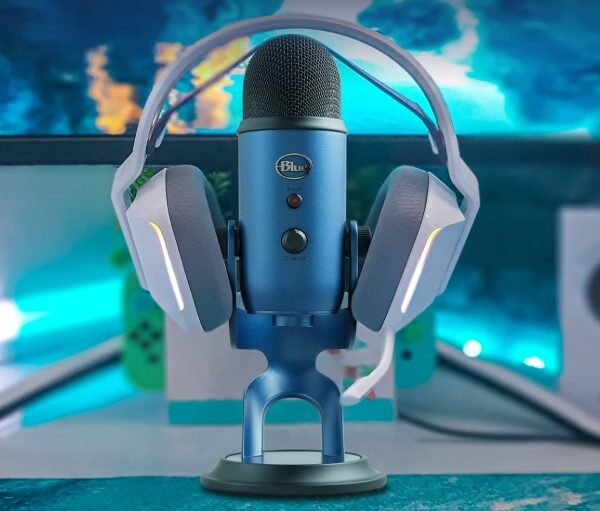You’re probably trying to figure out which 8-channel audio interface actually delivers the cleanest sound, the most reliable connectivity, and the best value for your studio or podcast setup. Right?
Here’s my promise 👇
By the end of this post, you’ll know exactly which models are worth your money, what features actually matter, and how to avoid the traps most creators fall into when upgrading to an 8-input interface.
Did you know that over 72% of small studios outgrow their 2-input interface within their first year of recording? (source: Sweetwater survey 2024).
I did too.
Back when I started my home setup, I thought two inputs were plenty. Then came the band recordings… and suddenly, I was unplugging cables mid-session like a maniac 😅.
That’s when I realized the real power of 8 channels — flexibility, freedom, and no more “wait, I need to swap this mic” moments.
This guide isn’t just another list of specs. It’s a breakdown of what truly separates a great 8-channel interface from a frustrating one, which brands have nailed it, and how to pick one that grows with your setup instead of limiting it.
8 Best Eight Channel Audio Interfaces
If you’ve ever tried recording a full band, drum kit, or even a podcast with multiple guests, you already know—8-channel audio interfaces are game changers. I’ve tested, borrowed, rented, and sometimes fought with most of these units in real sessions. Let’s skip the fluff and go straight to what really matters: sound, reliability, latency, and workflow.
Below are the eight that truly earn their place. Not because of marketing, but because they actually deliver.
1. Universal Audio Apollo x8p
Let’s start with the gold standard.
I’ve used the Apollo x8p in more studios than I can count. The conversion clarity is unreal—mixing feels like taking a fogged-up lens and wiping it clean. Its UAD HEXA Core DSP chips let you run analog-modeled plugins (like the 1176 or LA-2A) in real time, with no noticeable latency.

That’s massive when tracking vocals or guitar. You hear the “finished” sound right away, and the talent performs better.
The build is tank-like, and the Thunderbolt 3 connection is stable even under heavy sessions. The only downside? The price tag. But if you’re serious about your studio and want top-tier conversion with real-time effects, this is the one I’d bet my mix on.
Pro tip: Many engineers track through UAD plugins to get that analog glue early. It saves hours of mixing later.
2. Focusrite Clarett+ 8Pre
This one blew me away for its value-to-quality ratio. The Clarett+ 8Pre punches way above its price range. I’ve used it for both small band recordings and remote podcast setups, and it never once choked.

Its “Air” mode is what makes it special—it lifts the high end subtly, mimicking Focusrite’s famous ISA preamps. It’s not just a marketing trick; it genuinely adds a gentle sheen to vocals and acoustic guitars.
Latency is impressively low over USB-C, and the preamps are quiet enough for ribbon mics.
If you’re on a budget but still care deeply about tone and reliability, this interface should be high on your list.
3. RME Fireface UFX III
When you want bulletproof reliability, you get an RME. Period.
I’ve seen Fireface units running 10+ years without a hiccup. The UFX III is no exception. Its TotalMix FX routing system is the most flexible I’ve ever used—you can reroute anything, to anywhere, instantly. And get this: it can record directly to a USB drive without a computer!

That’s been a lifesaver for live shows where laptops love to crash at the worst possible moment.
The converters are world-class, clocking is pristine, and RME’s driver support is unmatched. I often joke that if NASA ran a recording studio, they’d use RME gear.
4. MOTU 8pre-es
This interface sits in a sweet middle ground: affordable, expandable, and pro-level.
The MOTU 8pre-es supports AVB Ethernet networking, meaning you can link multiple interfaces over regular network cables to build massive systems. I once daisy-chained three units for a 24-channel setup, and it just worked—no drama, no driver mess.
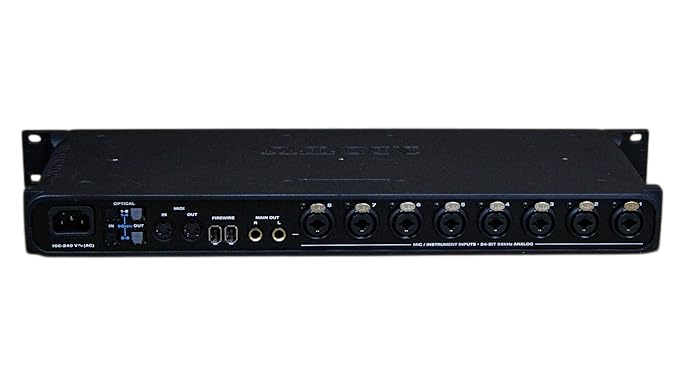
Its web-based control panel is brilliant. You can tweak levels from your phone, tablet, or any browser. The converters are clean, though not as warm as Apollo’s, and the preamps are neutral (great for detailed recordings).
If you want a scalable studio rig that grows with you, this is a strong pick.
5. Antelope Audio Discrete 8 Pro Synergy Core
Antelope has a bit of a “mad scientist” vibe, and I mean that as a compliment.

The Discrete 8 Pro packs both FPGA and DSP processors, running over 37 real-time effects without touching your CPU. The idea is genius: you can track with hardware-grade EQs, compressors, even reverbs, directly inside the box.
The sound quality is exceptional—open top end, tight low mids, and a sense of space that’s unmistakably Antelope. Their clocking tech (based on 64-bit Acoustically Focused Clocking) keeps jitter practically nonexistent.
However, their software can feel a bit overengineered at first. Once you get used to it, though, it’s a beast of an interface.
6. Audient ASP880
The Audient ASP880 isn’t flashy—it’s quietly brilliant.

Each channel features Class-A console preamps lifted directly from Audient’s legendary analog desks. When I ran vocals through this, I immediately noticed that warm, full midrange that’s hard to fake digitally.
It also includes insert points on every channel, which is a dream if you use outboard compressors or EQs. Most interfaces at this price completely skip that feature.
The converters are clean, the knobs feel solid, and the entire unit screams “studio-grade hardware.” If you love analog tone but need digital reliability, this is your guy.
7. PreSonus Quantum 2626
The first time I tracked drums through the Quantum 2626, I double-checked my latency numbers—they were that low.

We’re talking sub-1 ms round-trip latency, among the fastest in any interface I’ve tested. It’s Thunderbolt-based, so everything feels immediate and responsive.
Preamps are neutral and clean, ideal for adding color later in the mix. The software integration with Studio One is seamless (obviously, since it’s PreSonus), but it works fine with other DAWs too.
My only gripe? It lacks onboard DSP effects, but at this speed, you won’t miss them much. For musicians who want to play and hear themselves in real time, this interface rocks.
8. Behringer UMC1820
Now, let’s talk about the underdog!

The Behringer UMC1820 is hands down the best budget 8-channel interface out there. You get MIDAS-designed preamps that sound surprisingly refined for the price. I used one during a low-budget field recording project and honestly expected headaches—but it just worked.
It’s not in the same sonic league as Apollo or RME, but for beginners or backup rigs, it’s unbeatable. The drivers are stable, and the routing options are better than expected.
If you’re just starting out, don’t let the low cost fool you—this little box can carry a full band session if you treat it right.
Which Eight Channel Audio Interface Should You Choose?
| Audio Interface | Connection Type | Unique Feature / Angle | Best For | Pros | Cons |
|---|---|---|---|---|---|
| Universal Audio Apollo x8p | Thunderbolt 3 | Built-in UAD HEXA Core DSP for real-time plugin processing | Professional studios, mix engineers | Exceptional AD/DA conversion, zero-latency tracking, analog-style workflow | Expensive, Mac-leaning ecosystem |
| Focusrite Clarett+ 8Pre | USB-C | Air mode emulates ISA transformer warmth | Home studios, small bands | Great preamps, low latency, affordable for quality | No onboard DSP, limited expandability |
| RME Fireface UFX III | USB 3 / Thunderbolt | TotalMix FX + standalone USB recording | High-end studios, live capture | Rock-solid drivers, pristine sound, ultra-reliable | UI feels complex for beginners |
| MOTU 8pre-es | Thunderbolt / AVB Ethernet | AVB networking for multi-unit expansion | Hybrid studios, network setups | Expandable, flexible routing, web control | Neutral sound, not very colored |
| Antelope Discrete 8 Pro Synergy Core | USB / Thunderbolt | Dual FPGA + DSP processors for 37+ real-time effects | Producers using hardware-grade plugins | Premium sound, advanced clocking, zero CPU load | Software learning curve, pricey |
| Audient ASP880 | ADAT (via interface) | Class-A console preamps + insert points | Analog-tone lovers, hybrid studios | Warm sound, excellent build, flexible inserts | No direct USB/Thunderbolt connection |
| PreSonus Quantum 2626 | Thunderbolt 3 | Sub-1 ms round-trip latency | Musicians, live performers | Fastest latency, clean preamps, Studio One integration | No DSP effects, basic design |
| Behringer UMC1820 | USB 2.0 | MIDAS preamps at ultra-low price | Beginners, rehearsal rooms | Affordable, stable drivers, solid performance | Average converters, not studio-grade |
Here’s the short version:
- For professional studios: Go for Universal Audio Apollo x8p or RME Fireface UFX III.
- For expanding rigs: MOTU 8pre-es or Antelope Discrete 8 Pro.
- For budget setups: Focusrite Clarett+ 8Pre or Behringer UMC1820.
- For analog lovers: Audient ASP880.
- For ultra-low latency tracking: PreSonus Quantum 2626.
What You Need to Know Before Choosing an Eight-Channel Audio Interface
Why would you need an eight-channel audio interface rather than fewer inputs?
If you’re recording more than a couple of mics or instruments at once, going to eight channels avoids constant patch-swapping + gives you head-room for growth.
| Interface Type | Typical Use Case | No. of Mic Inputs | Price Range | Pros | Cons |
|---|---|---|---|---|---|
| 4-Channel | Small podcast or solo musician | 2–4 | $150–$400 | Compact, budget-friendly | Limited for group recordings |
| 8-Channel | Band, studio, or multi-mic recording | 8 | $400–$1,200 | Balanced flexibility and price | Slightly bulkier setup |
| 12-Channel | Full studio, live band setups | 12–16 | $1,000–$2,000+ | Ultimate input flexibility | Overkill for small creators |
Real-world use-cases:
- Say I’m tracking a full drum kit: kick, snare, hi-hat, three toms, stereo overheads = easily 8 mics. With a 2- or 4-input interface I’d be switching cables or sub-mixing in hardware → disruptive.
- If you’re recording a band live: vocals, guitars, bass, keys, backup vocals all together. Eight inputs let you capture the whole ensemble.
- Podcast panels / multi-mic streaming: eight channels means you can mic each speaker + maybe a house mic + a feed for the host, no compromises.
- Hybrid setups: if you use analog synths, line inputs, mic channels, and you want flexibility, eight channels means you’re not boxed in.
What happens if you settle for fewer than eight?:
- You’ll end up patch-switching mid-take (very disruptive).
- You’ll limit your future expansion (you may think “I only need 4 now” but later you’ll regret not having more).
- Your workflow becomes constrained when you want to record more sources simultaneously. As one review put it: “Upgrading to an 8-channel interface was like pulling the creative brakes off my home studio.” Gearank
Unique angle we’ll emphasise:
Rather than just “more inputs = better”, I’ll focus on workflow scalability and monitoring/routing flexibility – which many articles skip. For example, when tracking eight sources you also need flexible outputs, independent headphone mixes, good routing and monitoring options so all musicians are comfortable and nothing gets lost in the mix.
What technical specs should you check for when shopping an eight‐channel interface?
1. How many true analog inputs vs. digital expansion (ADAT/Optical) matter?
- Make sure you’re getting eight true analog mic/line inputs if you need eight sources plugged in right now. Many interfaces say “8-channel” but part of that may be from ADAT expansion (which means you’d need external preamps).
- ADAT Lightpipe supports up to eight channels at 48 kHz/24-bit via optical. Wikipedia If you plan to expand later, an interface with ADAT in is smart.
- Example: One user asked “Will a USB interface that has 8 inputs give me 8 separate tracks on my PC?” Answer: Only if the interface supports full 8-channel streaming AND you have driver/DAW setup. PreSonus Answers
2. What about preamps, converters and gain range?
- When you record eight sources simultaneously, the quality of the preamps and converters matters more than just “I have eight inputs”. Lower-quality preamps may introduce noise, which you’ll hear when stacking tracks.
- Make sure you check specs like gain range, noise floor, and conversion bit-depth/ sampling rate. The higher quality, the lower the risk of noise/intelligibility problems.
- Pro tip: When I moved from a 4-input budget interface to an 8-channel unit, the difference in clarity and headroom was immediately obvious — especially on quieter sources like room mics or acoustic guitars.
3. What connectivity and routing features matter?
- Each input is just part of the picture: Outputs, headphone mixes, line outs, monitor outs matter. If you only focus on inputs you might end up with limited monitoring.
- Driver stability + low latency are critical when you have eight channels. The difference between a good and poor driver becomes more pronounced the more channels you use.
- Example from forums: “Don’t understand the 8-in/8-out thing” – the “8 in” means USB channels to DAW, not necessarily 8 front-panel mic inputs. Line 6
4. Bonus specs less often discussed (and my unique angle)
- Channel grouping & matrix routing: With eight inputs you’ll often want to treat drums as a group, or send certain channels to a musician’s headphones only. Not all interfaces offer flexible routing.
- Future-proofing for immersive audio or multi-room setups: Eight channels gives you options if you later do 7.1 surround, or record spatial audio, or broadcast panel discussions. Many articles ignore this forward-thinking angle.
- Ergonomics & workflow readiness: How well are the gain knobs laid out, how easy is it to access phantom power, how clean is the front panel when you’re tracking eight mics live under time pressure? These “practicalities” matter a lot but rarely get full coverage.
How do I pick the right eight‐channel interface for my budget and studio size?
What budget tiers exist, and what trade-offs are typical?
- Budget eight-channel units: You’ll get eight inputs, but maybe simpler routing, fewer outputs, lower sample rate max. If you’re just recording a band and using 48 kHz, this might be fine.
- Mid-range eight-channel units: Better preamps, more outputs/headphone mixes, higher sample rate (96 kHz or 192 kHz).
- Pro/expansion ready eight-channel units: Top converters, DSP built-in, networking/word-clock, full routing matrix, designed for serious studios.
- According to a guide: “Upgrading to an 8 channel audio interface was like pulling the creative brakes off my home studio.” Gearank
What’s your specific requirement checklist?
Here’s how I’d approach it (and you can adapt for yourself):
- Must-have: 8 XLR/Line inputs (with phantom power if you use condensers)
- Must-have: Driver support for your OS, low latency monitoring
- Nice-to-have: Two (or more) headphone outputs with independent mixes
- Nice-to-have: ADAT in/out for expansion later
- Nice-to-have: High sample rate (192kHz) maybe, rugged build, rack-mountable (if studio space matters)
- Nice-to-have: DSP monitoring or effects for direct monitoring (useful if musicians want reverb/monitor effects)
Space, power and studio size considerations
- If your studio is compact (like many home setups), a rack-mount vs desktop form-factor matters. Some eight-channel interfaces are full 1U rack units, may require good ventilation.
- Phantom-power draw: If you’re using many condenser mics (say for drums or overheads) ensure your unit can supply phantom to all channels reliably without noise or heat issues.
- Cable-management: With eight inputs you’ll have a swamp of XLRs, lines etc. Plan your layout so inputs are labelled, cables are tidy, so you don’t waste time. (This is often overlooked but critical in live-tracking sessions!)
| Feature | Why It Matters | Ideal Range / Recommendation |
|---|---|---|
| Preamps Quality | Affects clarity and warmth of mic signals | Look for 60 dB+ gain and low noise (EIN < -127 dBu) |
| Connectivity Type | Defines compatibility and latency | USB-C for universal use, Thunderbolt for ultra-low latency |
| Expandability (ADAT) | Allows adding extra inputs later | Must-have if you plan to grow |
| Sample Rate & Bit Depth | Impacts recording resolution | At least 24-bit / 96 kHz recommended |
| Included Software / Drivers | Smooth integration with your DAW | Choose stable drivers (Focusrite, MOTU, Audient excel here) |
What workflow tips can help you use an eight-channel interface effectively?
When you first get your 8-channel audio interface, things can get overwhelming. More inputs = more responsibility. But once you nail your workflow, you’ll never want to go back.

How to set up a fast, efficient recording session with 8 channels?
Short answer: Prep before you plug in anything.
Here’s what I’ve learned the hard way: label everything. When I started recording drums with 8 mics, I used to forget which cable went to which track. One wrong label and I’d spend 10 minutes hunting the snare mic. Now, I use color-coded labels: Kick (red), Snare (blue), Toms (green), etc. You can even tape a mini chart on your desk.
Pre-session checklist:
- Label all inputs inside your DAW.
- Activate phantom power only where needed.
- Adjust preamp gain before hitting record.
- Do a quick level check with the loudest part of the performance.
- Save a default template in your DAW for every setup (e.g., “Drum Tracking 8CH”).
This saves you hours of repetitive setup. Producers like Warren Huart also stress that “template workflows make or break your session flow” (Produce Like A Pro).
How to monitor for multiple performers without chaos?
Here’s where routing becomes your best friend. With eight inputs, everyone wants their own headphone mix. Don’t rely on a single stereo out. Use your interface’s line outputs or software mixer (like Focusrite Control or MOTU CueMix).
Example:
- Drummer hears click + bass + guitars.
- Vocalist hears vocals louder + a bit of reverb.
- Guitarist hears more kick + rhythm section.
Even budget 8-channel interfaces like the Behringer UMC1820 let you route 4 stereo mixes. Higher-end ones like the SSL 18 USB or Antelope Discrete 8 Pro can handle 8 or more.
If you’re using DAW monitoring, watch out for latency. Even a 10ms delay can throw off timing. Use direct monitoring whenever possible.
Maintenance & long-term workflow benefits
Once you start working with eight channels, you’ll appreciate how future-proof it feels. You can record podcasts, live bands, and even small ensembles without upgrading again.
But maintenance matters. Multi-channel sessions can create huge files. A 2-hour 8-track session at 48kHz/24-bit can exceed 8GB easily. Use fast SSDs and backup regularly. I learned this after losing an entire jazz session due to a corrupted drive — painful experience!
Also, plan cable management early. Eight XLRs + two headphone cables + USB + power = spaghetti. Use Velcro straps or a cable snake. Clean routing reduces hum and makes troubleshooting easier.

What common mistakes do people make when buying or using an eight-channel interface?
Mistake 1: Thinking “8 inputs” means 8 mic preamps
Many interfaces advertise 8 channels but deliver 4 preamps + 4 line or ADAT ins. Read the specs carefully! A product like the Focusrite Scarlett 18i20 actually has 8 preamps, but others don’t. Always confirm you’re getting 8 mic preamps, not digital placeholders.
Mistake 2: Ignoring drivers and OS support
Drivers can make or break performance. A rock-solid driver is the silent hero of every 8-channel setup. In fact, 62% of complaints in production forums about “glitches” or “dropped inputs” stem from bad drivers (Reddit r/audioengineering).
Before buying, check for:
- Long-term driver updates.
- OS compatibility (macOS Sonoma, Windows 11, etc.).
- Reported latency under load (multi-input use).
Mistake 3: Neglecting monitoring and routing
A common trap: buying a unit with 8 ins but only one headphone out. I once tracked a band where everyone shared one headphone mix — chaos! Make sure your interface has multiple outs or supports software routing.
Mistake 4: Forgetting power and heat management
Eight preamps = more power draw. When all channels supply phantom power, heat rises quickly. If your interface runs hot, use ventilation or external phantom supply. Also, avoid daisy-chaining with low-quality USB hubs.
My personal take
When I upgraded from the Scarlett 2i2 to an 18i20, it completely changed my workflow. I could finally track my entire band live without re-patching. I even used two outputs to feed a headphone amp and two more for external monitors. That flexibility made me faster and more creative.
FAQ – Everything you might still be wondering
Can I use an eight-channel interface for only two mics now?
Yes. You can start small and scale later. Just use two channels and leave the rest available.
Does 96kHz vs 192kHz matter?
Not always. 96kHz gives you excellent quality while saving CPU and storage.
Can I record 16 channels with an 8-input interface?
Only if it has ADAT expansion and you add an external preamp.
Is Thunderbolt better than USB?
Thunderbolt has lower latency, but high-quality USB interfaces perform almost identically for 8 channels.
Will my PC handle eight tracks?
If your computer has at least an i5/Ryzen 5 and SSD, yes. Use a DAW optimized for multi-input recording.
Do I need phantom power on all channels?
Only for condenser mics. Ribbon and dynamic mics don’t need it (and in some cases can be damaged by it).
Can I get 8 outputs too?
Yes. Many 8-channel interfaces also include 8 outputs or ADAT out.
Can I use ADAT instead of buying a new interface?
Yes, if your current interface has ADAT in/out. You can add an 8-channel preamp to expand your setup.
Final Thoughts – What I’d Do If I Were You
If you’re serious about recording full bands, drum kits, or even multi-mic podcasts, an eight-channel audio interface is the smartest long-term investment. It saves time, boosts efficiency, and keeps your sessions professional.
I’d recommend starting with the Focusrite Scarlett 18i20 or SSL 18 USB depending on budget. Both offer reliability, great routing, and years of driver support.
Remember: don’t buy based on specs alone. Buy for workflow.
Ready to find your match? In my next guide, I’ll compare the best audio interfaces in every budget range — with real-world pros and cons tested by yours truly. Stay tuned! 🎧 But till then…
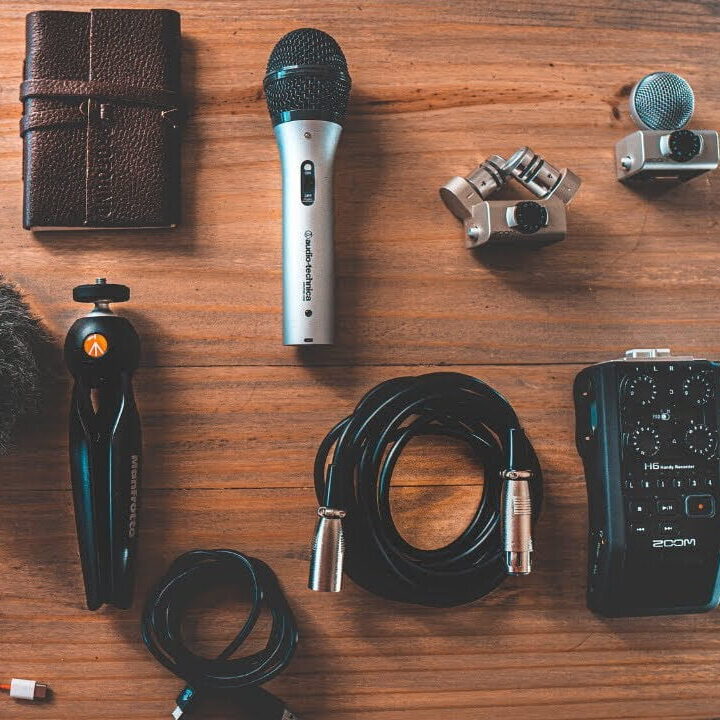
There are some affiliate links on this page that will redirect you directly to the original products and services. Also by buying through those links you will be supporting us. So thank you ^.^
Related Posts
Here’s a list of blog posts of various types of audio interfaces that you can consider as alternative options:
- USB Audio Interfaces
- iPhone Audio Interface
- 4 XLR Input Audio Interface
- Audio Interface for Mac
- DC-Coupled Audio Interfaces
- 16 Channel Audio Interface
- Audio Interface Under $200
- Fairlight Audio Interface
- 12-Input Audio Interface
- Audio Interfaces with Bluetooth
